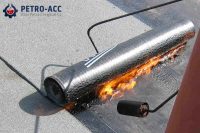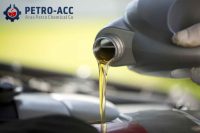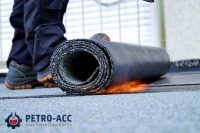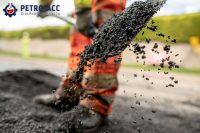LABSA uses in drilling fluids is normally as an emulsifier, wetting agent, and dispersant.
In drilling fluids, LABSA is primarily used as an emulsifier. It helps to stabilize the emulsion of oil-based drilling fluids, which are commonly used in drilling operations. This is important because it helps to prevent the oil from separating from the water-based components of the drilling fluid, which can cause a range of issues including reduced drilling efficiency and increased maintenance requirements.
LABSA can also be used as a wetting agent in drilling fluids. This means that it helps to reduce the surface tension of the drilling fluid, which can improve the ability of the fluid to wet the surfaces it comes into contact with. This can be useful in drilling operations because it can help to ensure that the drilling fluid is able to penetrate and lubricate the formation being drilled.
Finally, LABSA can be used as a dispersant in drilling fluids. This means that it helps to break up and disperse solids that may be present in the drilling fluid. This can be important because it can help to prevent the formation of blockages in the wellbore, which can cause a range of issues including reduced drilling efficiency and increased maintenance requirements.
Overall, LABSA can be a useful additive in drilling fluids because of its ability to act as an emulsifier, wetting agent, and dispersant. However, the specific application and dosage of LABSA in drilling fluids may depend on the specific requirements of the drilling operation and the properties of the drilling fluid being used.
BENEFITS OF USING LABSA IN DRILLING FLUIDS
The benefits of using LABSA in drilling fluids include:
- Emulsification: LABSA is an excellent emulsifier and can emulsify both oil-based and water-based drilling fluids. It helps to create a stable emulsion, which enhances the drilling fluid’s performance and prevents separation.
- Wetting: LABSA improves the wettability of solids in the drilling fluid, which helps to reduce the fluid’s viscosity and increase the efficiency of the drilling process.
- Lubrication: LABSA acts as a lubricant in the drilling process, which reduces friction and minimizes wear and tear on the drilling equipment.
- Cleaning: LABSA has excellent cleaning properties and can help to clean the drilling equipment and remove any residues or impurities that may have accumulated during the drilling process.
- Corrosion inhibition: LABSA can act as a corrosion inhibitor and protect the drilling equipment from rust and other forms of corrosion.
Overall, the use of LABSA in drilling fluids can help to enhance the performance of the drilling process, improve the efficiency of the equipment, and reduce downtime and maintenance costs.
METHODS OF USING LABSA IN DRILLING FLUIDS
LABSA is commonly used in drilling fluids. It is used to reduce the surface tension of water-based drilling fluids and improve their performance. There are different methods of using LABSA in drilling fluids, including:
- Direct Addition: LABSA can be added directly to the drilling fluid system. This method is simple and effective, and it is commonly used in drilling operations.
- Batch Mixing: LABSA can be mixed with other additives before being added to the drilling fluid system. This method is used to ensure that LABSA is evenly distributed throughout the drilling fluid.
- Continuous Injection: LABSA can be continuously injected into the drilling fluid system using a chemical injection pump. This method is used to maintain a consistent concentration of LABSA in the drilling fluid.
- Pre-blending: LABSA can be pre-blended with other drilling fluid additives and then added to the drilling fluid system. This method is used to ensure that LABSA is evenly distributed throughout the drilling fluid.
- Spotting: LABSA can be added to specific areas of the wellbore where there is a high concentration of contaminants. This method is used to improve the performance of the drilling fluid in those areas.
It is important to note that LABSA should be handled with care, as it is a corrosive and toxic substance. Proper safety precautions should be taken when handling and using LABSA in drilling fluids.
HOW LABSA DECREASE DRILLING FLUIDS COSTS
LABSA can also be used to reduce the cost of drilling fluids in the following ways:
- Cost-effective drilling fluid formulation: LABSA can be used as a primary emulsifier in the formulation of drilling fluids. It is an effective and cost-efficient alternative to other emulsifiers like petroleum sulfonates, which can be expensive.
- Improved drilling fluid performance: LABSA can enhance the performance of drilling fluids by reducing the interfacial tension between the drilling fluid and the formation fluids. This can improve drilling efficiency and reduce the amount of drilling fluid needed.
- Reduced drilling fluid losses: LABSA can also reduce the amount of drilling fluid lost to the formation by stabilizing the emulsion and preventing the coalescence of the oil droplets. This can result in a reduction in the amount of drilling fluid needed and therefore a decrease in costs.
- Environmental benefits: LABSA is considered a more environmentally friendly alternative to other drilling fluid additives, as it is biodegradable and has low toxicity.
Overall, LABSA can be an effective tool in reducing drilling fluids costs and improving the efficiency of the drilling process.








